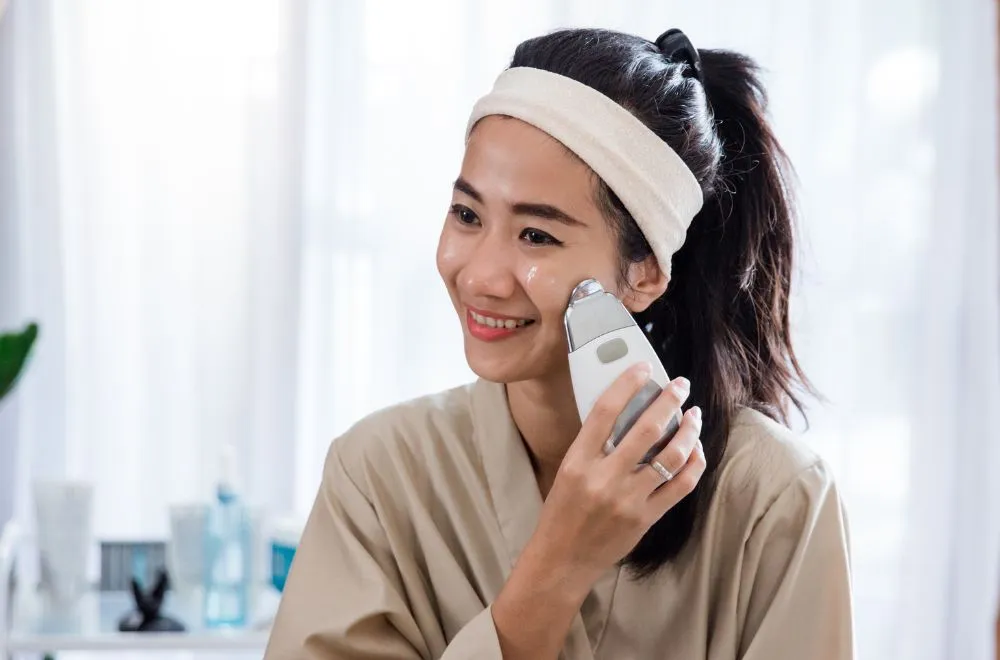After witnessing steady growth for almost a decade, beauty and cosmetic brands saw a decrease in revenue in the U.S. last year. The climb back up has resumed since then, and Statista predicts that revenue of the cosmetic market will increase up to $21.9 billion by 2026. To decipher this in an interactive webcast series, Firstmovr hosted a beauty event earlier in June.
Pacvue hosted an info-packed presentation for the event, helping health and beauty brands learn how to capitalize on it in the eCommerce space going forward. It was hosted by Pacvue’s Retail Media Account Manager, McKenna Grimsby, and Account Director, Gabby Martinez.
In this blog, we will cover some of the most fascinating statistics, trends, consumer behavior patterns, and ad types to take advantage of from Pacvue’s presentation. By the end, you’ll know about the current retailer landscape, shoppers’ mindsets, and more about 5 of the biggest eCommerce platforms – Amazon, Walmart, Target, Instacart, and Kroger.
Current Retailer Landscape
In Q1 2022, the Sponsored Products CPC fell by 19.85% to an average of $1.13, while the Sponsored Brands CPC fell by 6.94% to an average of $1.34. Overall, however, US cosmetics and beauty retail eCommerce sales in 2022 are predicted to be double those in 2019.
With $18.6 billion up for grabs, retailers are motivated to increase their market share and attract more shoppers to their brand online. The current retailer landscape for beauty and personal care product brands shows consumers who are looking to spend big and spend frequently, provided the right targeting.
This data shows how the industry is expected to continue ballooning well into the future, crossing $70 billion by 2024. Each eCommerce platform can also be seen coming up with new ways to advertise and market to prospective consumers, including Sponsored Display on Amazon, Brand Pages on Instacart, and Targeted Onsite Ads on Kroger.
Platform-Wise Consumer Mindsets & Trends
Despite overlaps, each eCommerce platform has a clear USP and has evolved to best serve consumer requirements. Understanding these differences and making subtle changes to the approach you take is key. With every new update comes an opportunity for you to meet and exceed expectations for omnichannel success.
Amazon
Being the most popular with the greatest number of brands on-platform, Amazon is popularly used by consumers as a research tool as well. For brands, despite the extra noise, this means there is lots of scope for growth and visibility.
Many of the recent trends have been rooted in the Amazon DSP directing off-platform traffic onto Amazon brand pages and accessing precious first-party audience data can both lead to more intelligent campaigns.
Walmart
Offering both in-store and online shopping experiences has helped Walmart stand out and create a name for itself in the industry. One of its key strategies is offering shoppers cost-saving options, including daily deals and limited-time discounts to increase cart value.
A recent notable trend is the limited opportunity to show up on top-of-search, with manual campaigns and bidding proving to be most successful for advertisers.
Target
Target shoppers are fiercely loyal, and the brand name value doesn’t hurt. Target offers more opportunities for brands to become the shoppers’ new favorites by outperforming the competitors while staying affordable.
A blend of Search support and Display efforts are popular trends lately, even catching the eye of some of the biggest brands on the platform.
Instacart
Since its massive growth spurt during the pandemic, the platform has gone above and beyond to continue excelling in the game, with focusing on expanding beyond grocery. Consumers here are ready to purchase, performing searches and adding products to their cart in real-time.
For both CPG brands and beauty-specific retailers, Instacart plans on allowing off site Display campaigns to drive to curated brand store pages soon. These will allow you to drive offsite traffic from various channels directly onto your newly created brand page and skyrocket profits.
Kroger
The second-largest retail platform in the country has recently brought more focus to household categories, surpassing inflation and building a loyal consumer base. Shoppers want convenience and savings, so high-performing brands are those advertising via search product listing ads (PLAs) and Targeted on site ads (TOAs).
Ad Types to Take Advantage of
With ever-changing consumer demands, eCommerce platforms are stepping up the game and giving retailers more opportunities than ever to create a memorable brand campaign. Amazon launched Live, and beauty brands have brought in popular social media influencers to see massive success.
In fact, live streaming has upgraded shoppable video advertisements altogether. Now, advertisers can leverage AR & VR to reduce overhead, attract purchases with a single click, and retain customers with greater ease. Projected growth for the global augmented and virtual reality assessments is at a rate of 25.5% from 2022 to 2027.
The pandemic also triggered an increased focus on cleaner living practices, and shoppers have consistently rewarded brands with labels of “green”, “eco-friendly”, and “sustainable” in their campaigns. Providing 100% transparency, clean beauty has been on the rise and shows no signs of slowing down.
The third ad type to receive unprecedented success is personalized products for shoppers online. The comfort of receiving beauty and personal care products best suited to their needs with just a few clicks on an e-questionnaire is enough for shoppers to drop big bucks on these brands.
Key Takeaways
Pacvue’s presentation also analyzed and shared real numbers from the case studies of two leading brands that adopted new strategies and saw their growth charts point north. A leading body wash brand on Walmart adopted Self Service management utilizing Pacvue optimization rules and saw a 98% increase in conversion rate with a 24% decrease in CPC.
Another leading hair care & body care brand on Kroger implemented Saving PLA’s during Yellow Tags to become 41% more cost-efficient in CPC as compared to S&B and BB PLA’s. The lesson here is to recognize and adopt from platform to platform, ensuring the message you want to communicate is fit into unique templates everywhere.
To perfect your intelligent marketplace management strategy and optimize your business with end-to-end reporting, check out Pacvue Commerce and request a demo today!













